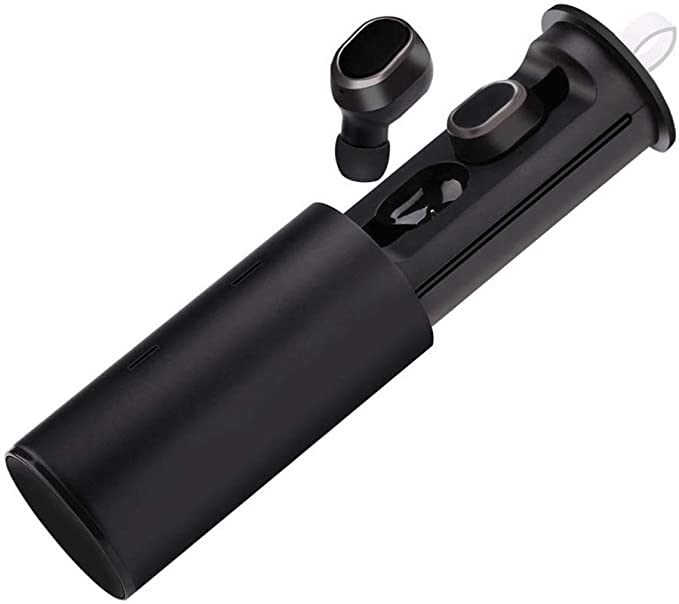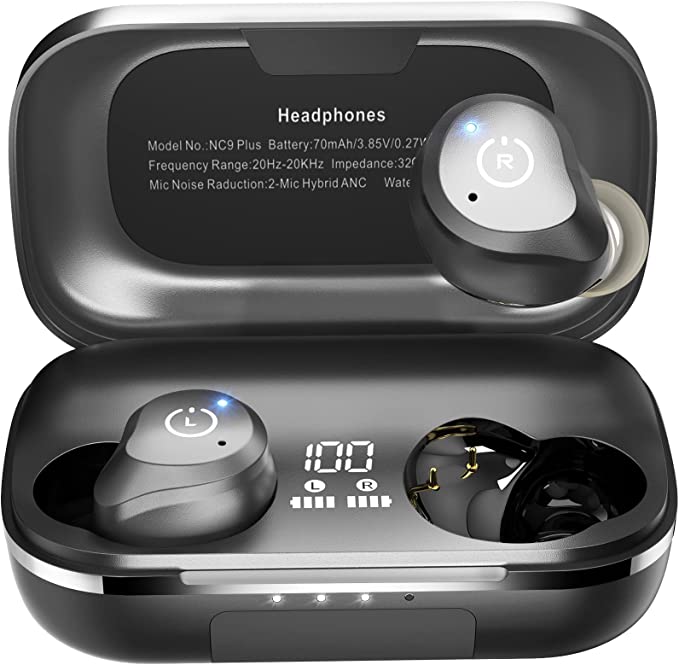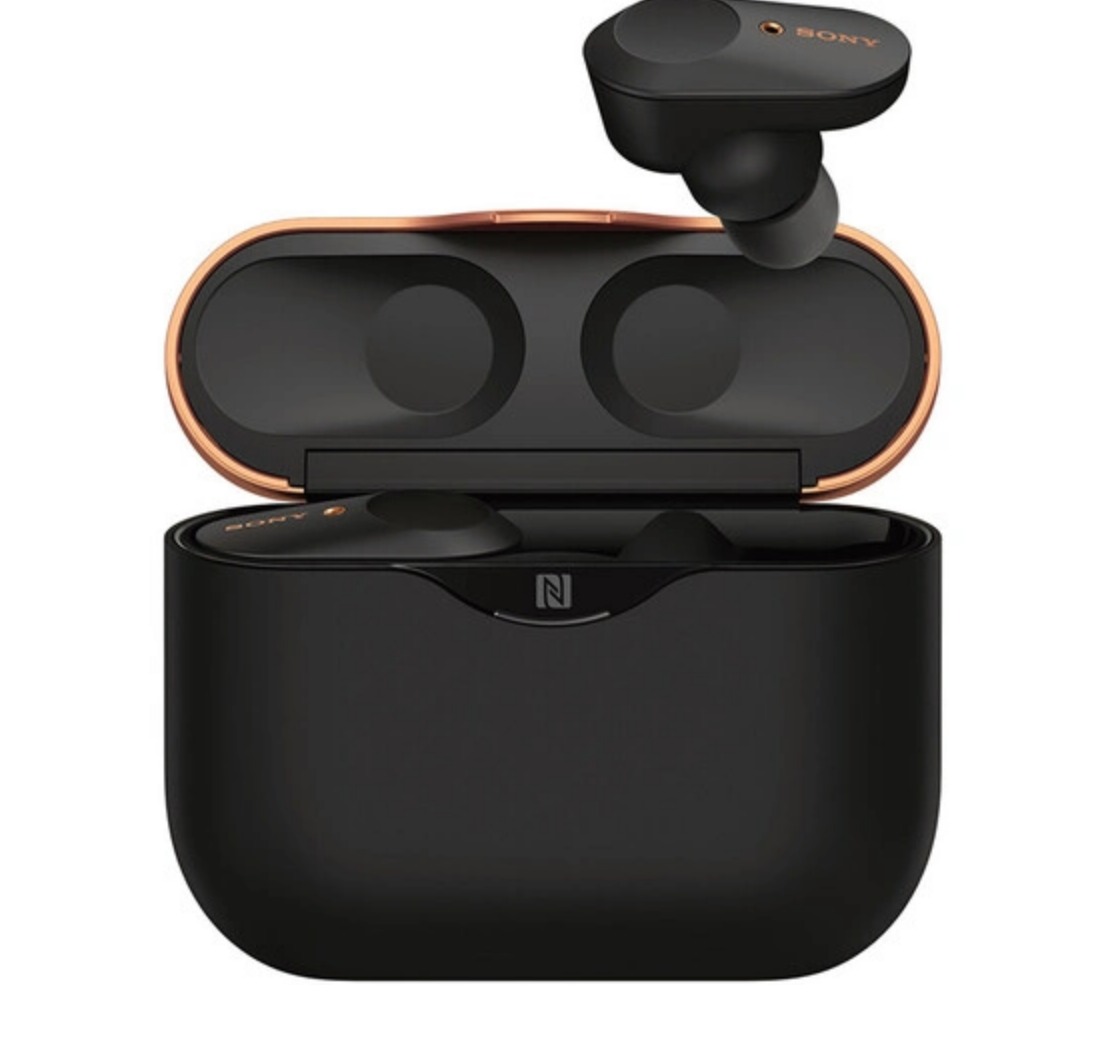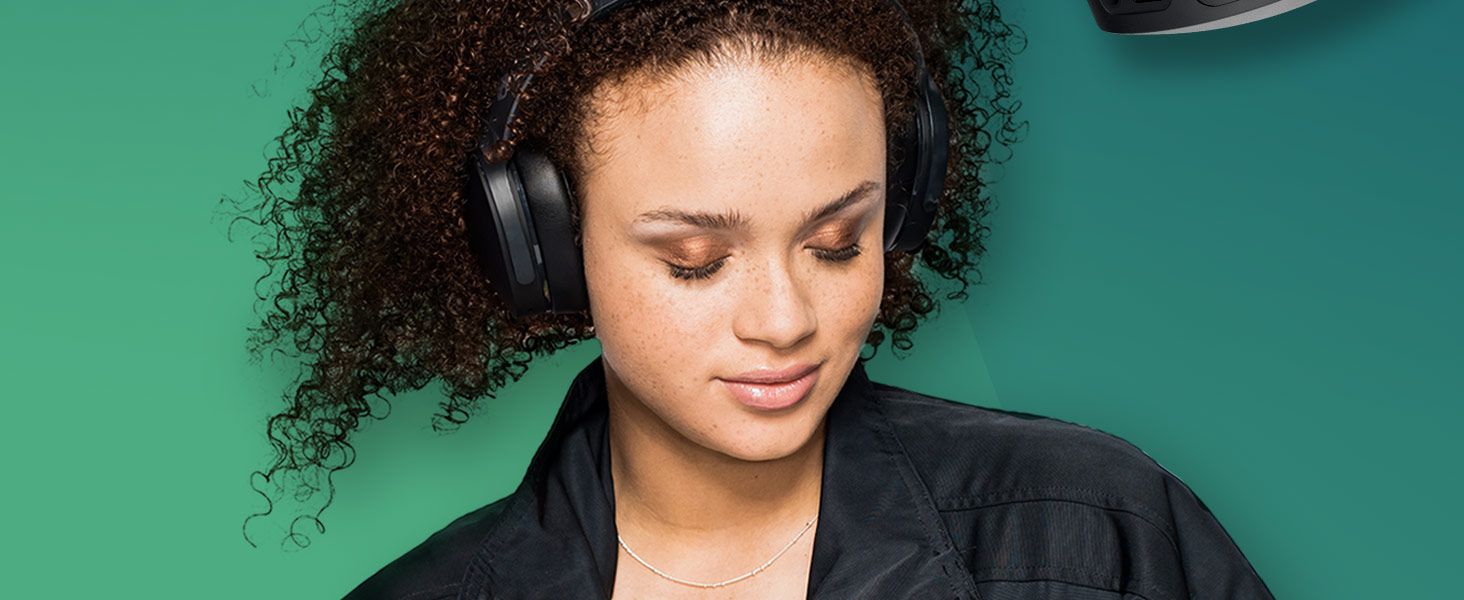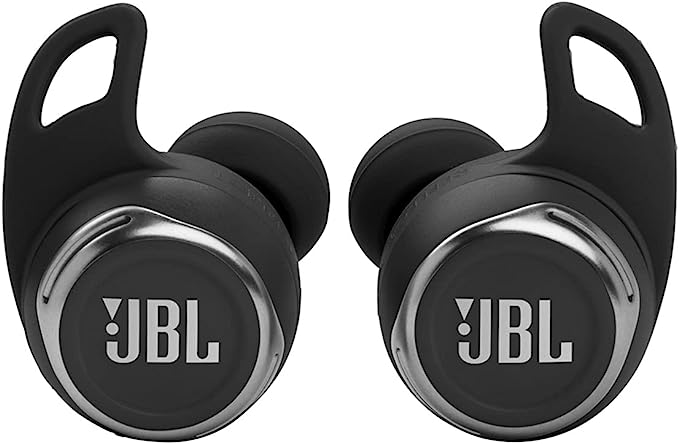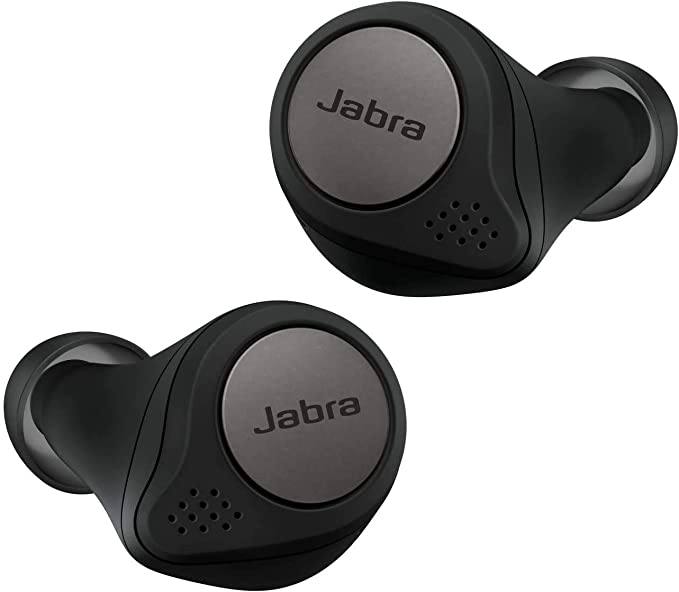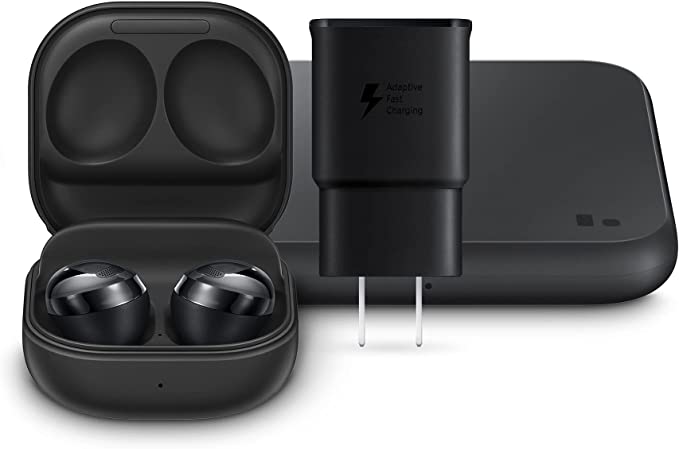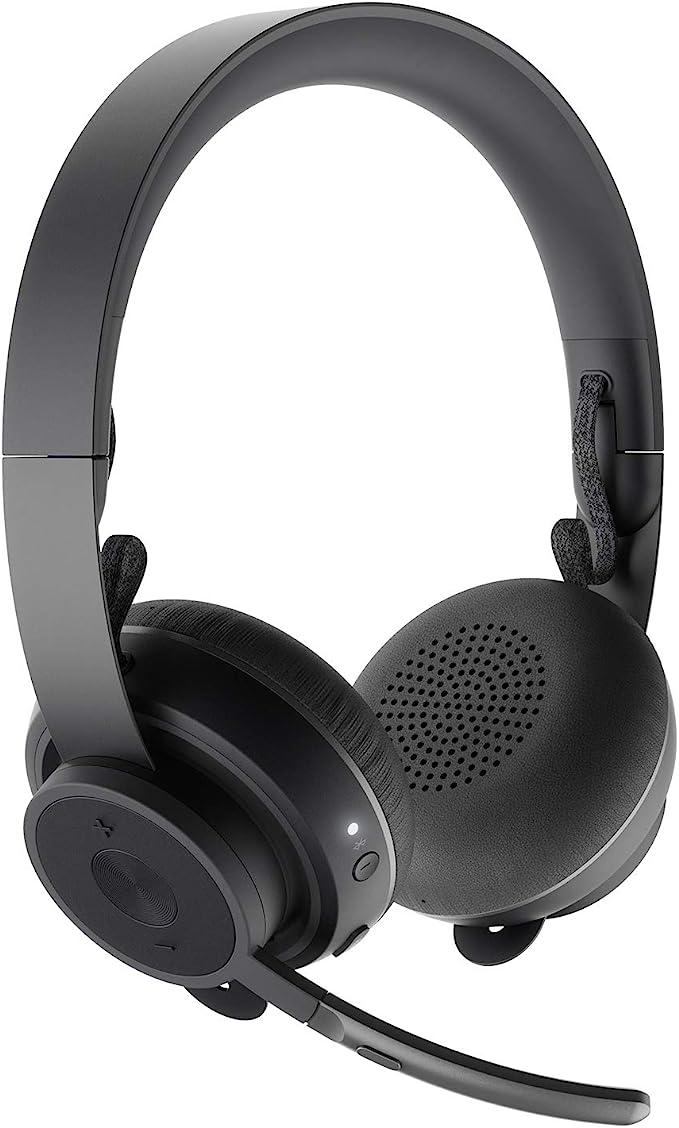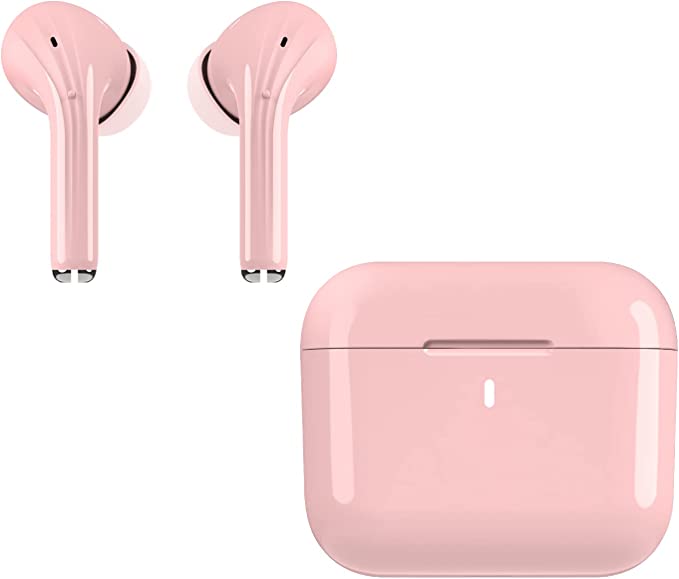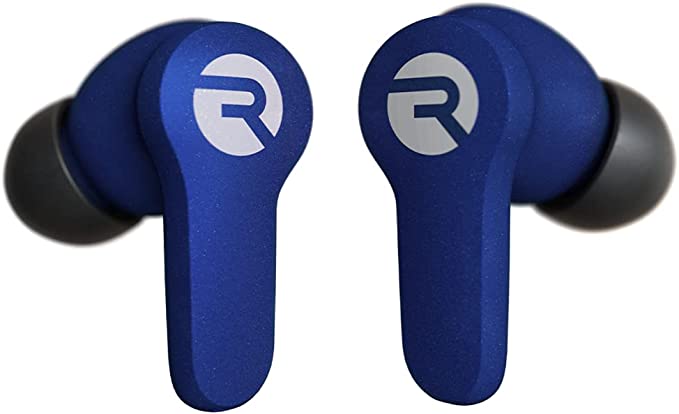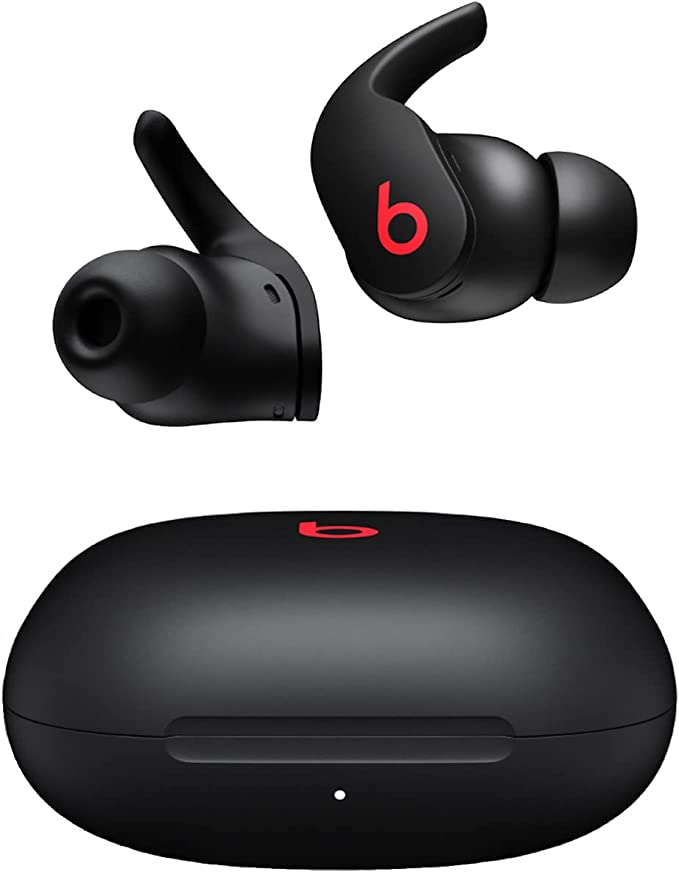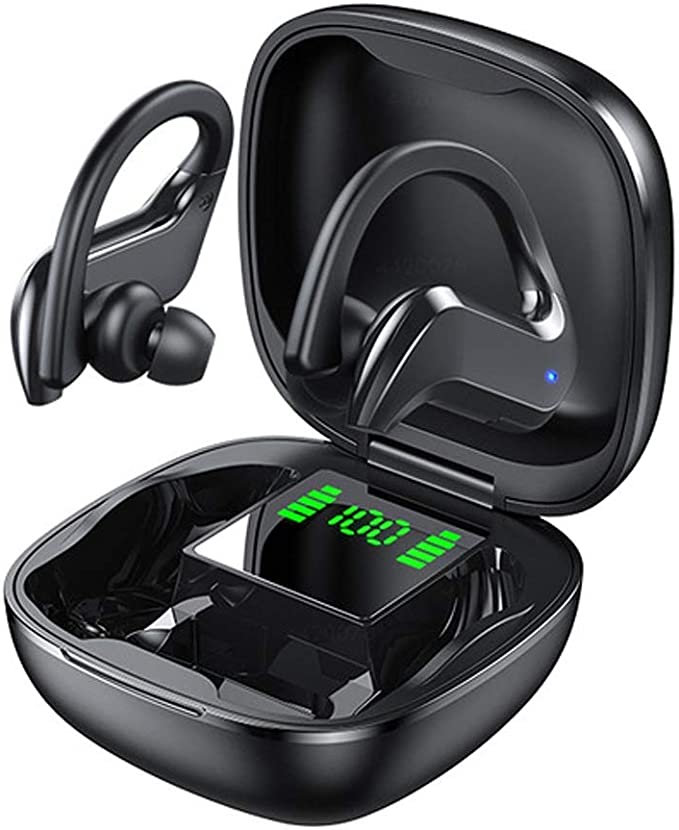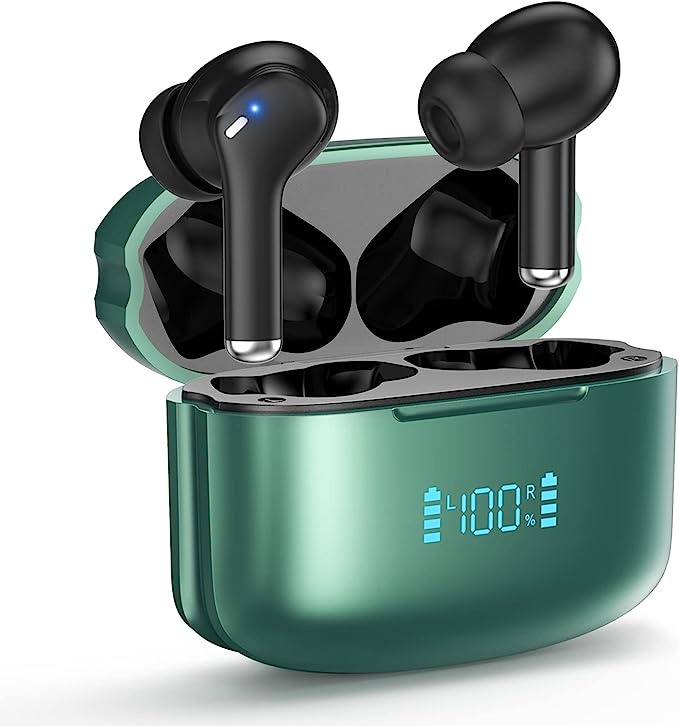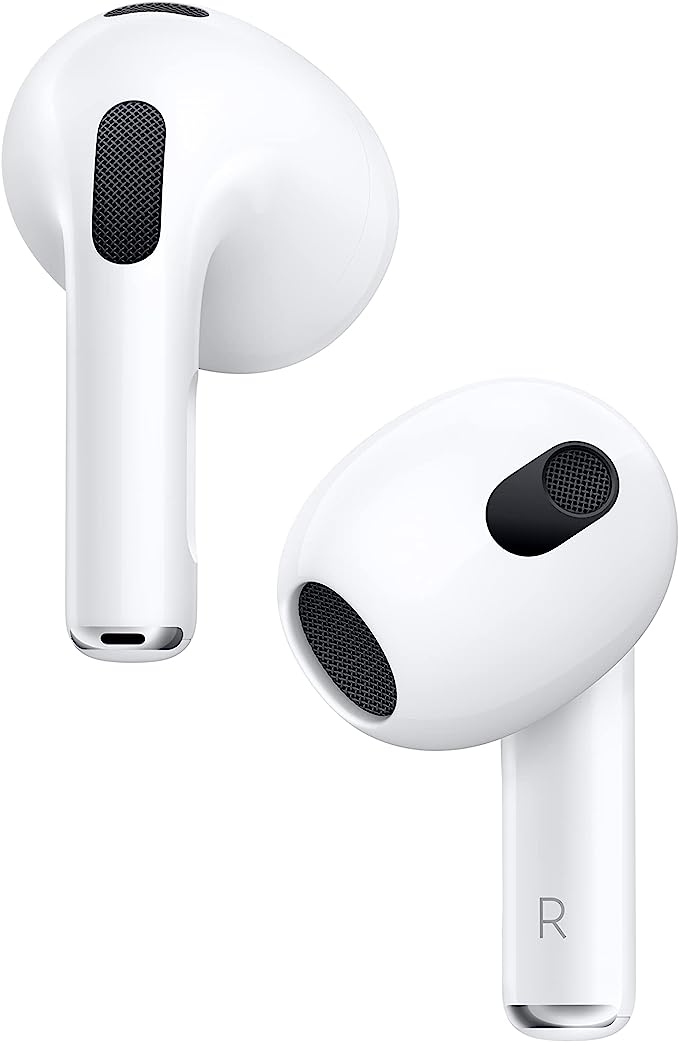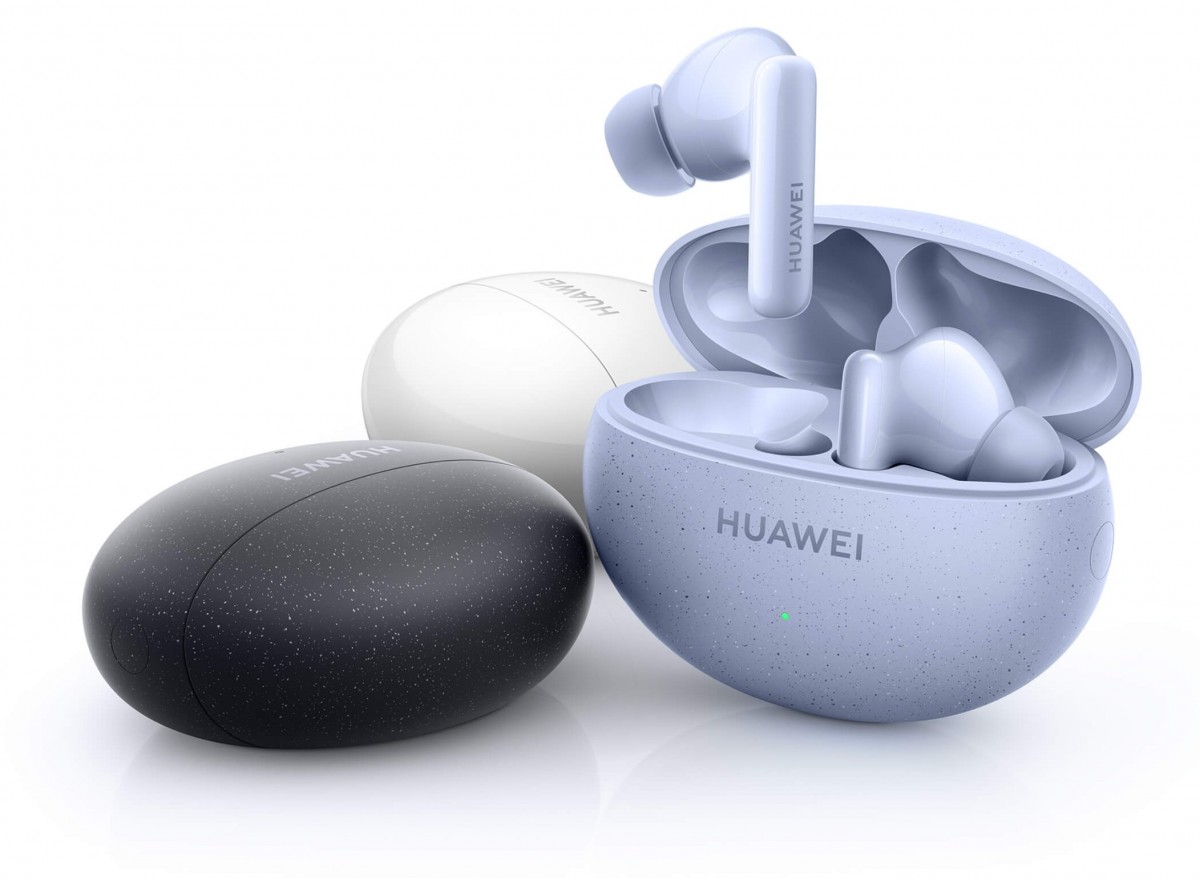Bose QuietComfort Ultra Earbuds: The Science of Silence and 3D Sound
Update on May 28, 2025, 4:10 p.m.
In a World of Noise, Reclaiming the Art of Listening
Imagine standing on a bustling city street: car horns blare, construction work rattles the pavement, and a cacophony of conversations a_nd distant sirens melds into an overwhelming wall of sound. Now picture yourself trying to focus in an open-plan office, where every phone call, every keyboard click, every impromptu meeting becomes an unwelcome distraction. In these moments, do you ever feel like we’re losing the ability to truly listen – to music, to important conversations, or even to our own thoughts? The modern world, for all its wonders, has inadvertently declared war on auditory serenity. Yet, from this sonic battlefield arises a powerful ally: technology, designed not just to amplify, but to purify, to immerse, and to restore our personal soundscapes.
Enter the Bose QuietComfort Ultra Earbuds. These are more than just a pair of wireless earbuds; they represent a sophisticated attempt to sculpt your personal auditory environment. They are a testament to decades of acoustic research, promising not only to silence the chaos but also to transport you into the heart of your audio. This journey isn’t just about technical specifications; it’s about understanding the science, the history, and the human-centric design that converge to create moments of pure, unadulterated listening. So, let’s delve into the sound magic behind these earbuds, exploring how technology empowers us to reclaim the art of listening.

The Guardian of Silence: How Active Noise Cancellation Tames the Roar
The relentless hum of an airplane cabin, the distracting chatter of a coffee shop, the low rumble of a commuter train – these are the everyday acoustic invaders that Active Noise Cancellation (ANC) technology seeks to conquer. Bose has long been a pioneer in this domain, and the “world-class noise cancellation” touted for the QuietComfort Ultra Earbuds isn’t just marketing hyperbole; it’s rooted in fascinating scientific principles and a rich history of innovation.
It’s said that the genesis of Bose’s noise-cancellation journey began in the late 1970s when Dr. Amar G. Bose, founder of the company, was on a flight, disappointed by the way aircraft noise interfered with the headphones of the era. This sparked a quest not just to block noise, but to actively cancel it. This distinction is crucial. Passive noise isolation, achieved by a good physical seal (like an earmuff or well-fitting earbud), can reduce some high-frequency sounds. But to combat those pervasive low-frequency rumbles, a more active approach is needed.
At its heart, ANC is an elegant application of a fundamental acoustic principle: destructive interference. Imagine sound as a wave, with peaks and troughs. If you can generate another sound wave that is an exact mirror image of the unwanted noise – meaning its peaks align with the noise’s troughs, and vice-versa – the two waves will effectively cancel each other out, resulting in silence, or at least a significant reduction in perceived sound.
So, how do the QuietComfort Ultra Earbuds perform this acoustic “Tai Chi”?
1. The “Smart Ears” (Microphones): Tiny microphones are strategically placed on the outside (and sometimes inside) of the earbuds. These act as vigilant sentinels, constantly sampling the ambient sounds in your environment. They pick up the offensive noise waves before they reach your eardrums.
2. The “Agile Brain” (Digital Signal Processor - DSP): The captured noise signature is then fed, in real-time, to a sophisticated DSP chip within the earbuds. This chip is the powerhouse of the ANC system. It analyzes the incoming noise waveform with incredible speed and precision.
3. Generating the “Anti-Noise”: Based on this analysis, the DSP generates a new sound wave that is precisely 180 degrees out of phase with the unwanted noise – its “anti-noise” twin.
4. The Cancellation: This anti-noise signal is then played through the earbud’s internal speakers, mixing with your desired audio (music, podcast, etc.). At your eardrum, the original noise wave and the generated anti-noise wave meet and, through destructive interference, largely neutralize each other.
Modern ANC systems, like the one likely employed by Bose, are even more sophisticated. They often use multiple microphones (feedforward mics outside, feedback mics inside the ear cup/bud) to fine-tune the cancellation across a wider range of frequencies and adapt to changes in how the earbud is positioned or how the external noise field shifts. This “adaptive” capability means the earbuds are constantly optimizing the silence they create.
The value of this technology extends far beyond just enjoying music more clearly. In a noisy office, ANC can be a productivity booster, creating a “cone of silence” that aids concentration. During a daily commute, it transforms a stressful journey into a more tranquil interlude. On long flights, it significantly reduces engine drone, lessening fatigue. As some users of the QuietComfort Ultra Earbuds (according to the provided product page information) have attested, the noise cancellation can be “truly superb,” to the point of startling a partner who has to tap them on the shoulder to get their attention.
However, a common phenomenon with powerful ANC is a sensation of “pressure” in the ears, sometimes likened to the feeling during aircraft ascent or descent. This isn’t actual air pressure změna, but rather a psychoacoustic effect. Our brains are accustomed to a certain level of ambient low-frequency sound; when this is suddenly and significantly reduced, the brain can interpret this novel sensory input in unusual ways. Most users adapt to this sensation over time.
Ultimately, effective Active Noise Cancellation, as pursued by the Bose QuietComfort Ultra Earbuds, is like having a personalized mute button for the world around you – a technological shield against the daily acoustic onslaught.

Bringing Sound to Life: The Dimensional Journey of Bose Immersive Audio
For decades, our primary audio experience through headphones has been stereo – sound delivered to our left and right ears, creating a sense of width, but largely confined to a line between them. But what if sound could break free from these confines? What if music could feel like it’s enveloping you from all directions, as if you were in the room with the performers? This is the promise of Bose Immersive Audio, the company’s take on spatial audio, further enhanced with dynamic head tracking. It aims to transform listening from a passive reception to an active, three-dimensional experience.
The evolution from mono to stereo was revolutionary. Spatial audio, and by extension Bose Immersive Audio, represents the next frontier. It’s not just about adding more channels; it’s about fundamentally changing how sound is rendered and perceived.
1. Crafting the 3D Soundstage: Instead of just left and right, spatial audio technologies aim to place individual sound sources (like a guitar, a vocal, or a cinematic sound effect) as distinct “objects” in a virtual 3D space around your head. This means sounds can appear to come from in front of you, behind you, above you, or below you, creating a much more realistic and engaging soundscape. The music or movie soundtrack is mixed or processed to take advantage of this multi-dimensional canvas.
2. The “Invisible Gyroscope” (Dynamic Head Tracking): This is where the “Immersive” part truly comes alive. The QuietComfort Ultra Earbuds incorporate tiny, highly sensitive motion sensors – likely an Inertial Measurement Unit (IMU) comprising accelerometers and gyroscopes. These sensors constantly monitor the orientation and subtle movements of your head in real-time.
3. The Brain’s “Auditory Magic” (Simplified HRTFs): Our ability to pinpoint where a sound is coming from in 3D space is a marvel of neural processing. The brain uses several cues, including the minute differences in time and loudness with which a sound reaches each ear (Interaural Time Differences, ITD, and Interaural Level Differences, ILD). Crucially, the shape of our head, torso, and outer ears (pinnae) also subtly filters sound in a way that is unique to its direction of arrival. This filtering is described by what’s known as a Head-Related Transfer Function (HRTF). Spatial audio systems try to replicate or simulate these HRTF cues. Bose Immersive Audio with head tracking uses this information to make the virtual sound sources appear fixed in space. So, if a singer’s voice is placed directly in front of you, and you turn your head to the left, the voice will sound as if it’s now coming from your right – just as it would in real life. The soundstage remains stable, independent of your head motion.
4. The Challenge of Real-Time Rendering: For head tracking to be convincing, the audio processing must be incredibly fast. Any perceptible lag between your head movement and the corresponding shift in the soundscape can break the illusion and even cause a sense of disorientation.
The intended experience is profound: music can feel less like a recording and more like a live performance. One user on the product page described the immersive settings as “game changing.” Movies can offer a more theater-like, enveloping atmosphere. Even a simple phone call (if the feature extends to calls) could feel more natural, with the other person’s voice having a distinct, stable location.
However, the perception of spatial audio, especially with head tracking, can be quite subjective. The same product page also contains a review where the user found the immersive audio to be a “gimmick” that made the sound “more tinny.” This divergence isn’t surprising. The effectiveness of HRTF simulation can vary based on individual ear shapes and how closely the generalized HRTF used by the earbuds matches one’s personal auditory profile. Furthermore, the quality of the spatial audio mix in the source material (the music track or movie soundtrack) plays a huge role. Not all content is created or mixed optimally for spatial audio, and poorly executed spatial mixes can indeed sound artificial or gimmicky.
Bose Immersive Audio, therefore, is an ambitious technology that pushes the boundaries of personal audio. It’s an invitation to step inside your sound, to experience it with a new sense of depth and realism, understanding that the journey to a universally perfect 3D audio illusion is one that the entire audio industry is still navigating.

Beyond Silence and Immersion: Crafting the Complete Listening Experience
While groundbreaking noise cancellation and immersive spatial audio steal the headlines, the true measure of an exceptional earbud lies in the holistic experience it delivers. The Bose QuietComfort Ultra Earbuds demonstrate an attention to detail across several other facets that contribute significantly to user satisfaction, from sound personalization to the ergonomics of wear.
The “Signature Sound” You Design: The Power of Customizable EQ
No two pairs of ears hear exactly alike, and musical tastes are wonderfully diverse. Recognizing this, the QuietComfort Ultra Earbuds offer customizable sound profiles through an equalizer (EQ). Think of an EQ as your personal audio “mixing board” or a “palette” for sound. It allows you to adjust the amplitude (loudness) of specific frequency bands – the deep rumble of bass, the clarity of midrange vocals, the sparkle of treble.
The underlying principle is simple: audio signals are composed of various frequencies. An EQ provides “sliders” or presets that let you, for instance, boost the bass for a more impactful hip-hop track, elevate the midrange for richer vocals in an acoustic piece, or enhance the highs for more detail in classical music. This ability to tailor the sound signature ensures that the audio reproduction aligns with your preferences and the specific genre you’re enjoying, moving beyond a one-size-fits-all approach. The provided product information highlights “an array of EQ presets,” which offers a good starting point for those who prefer not to delve into manual adjustments, while still allowing for personalization.
A “Second Skin” for Your Ears: Ergonomics and Material Science
The most advanced audio technology is rendered moot if the earbuds are uncomfortable to wear for extended periods or if they constantly fall out. Bose has a legacy of focusing on comfort, and the QuietComfort Ultra Earbuds appear to continue this tradition with their “ergonomic, soft silicone design.”
The choice of silicone for eartips and stability bands is deliberate. Medical-grade silicone is generally hypoallergenic, soft, and can conform to the unique contours of the ear canal and concha. This achieves several crucial goals: * Comfort: A soft, pliable material minimizes pressure points, allowing for longer listening sessions without fatigue. * Secure Fit & Stability: The stability bands, often designed to tuck under the antihelix ridge of the ear, work in conjunction with the eartips to provide a secure anchor. This is vital not just for everyday use, but especially during activities like workouts, where the earbuds are subjected to more movement. As one user from the provided text mentioned, they had “no problem doing vigorous work with no fear of them coming out.” * Passive Noise Isolation: A snug fit creates a physical seal that blocks out a good portion of external high-frequency noise even before the ANC kicks in. This passive isolation complements the active cancellation. * Optimal Acoustic Performance: A proper seal is essential for good bass response. If the seal is poor, bass frequencies can “leak” out, resulting in a thin or weak sound.
Recognizing the vast diversity in human ear shapes and sizes, Bose includes a “Fit Kit” with three pairs of eartips (Small, Medium, Large) and three pairs of stability bands. Even more thoughtfully, the described “Bundle with Alternate Sizing Kit” further expands this with X-Small and X-Large eartips and additional stability band sizes (0 and 4). This commitment to providing a comprehensive range of fit options underscores the understanding that an optimal fit is paramount not just for comfort, but for unlocking the full potential of both noise cancellation and audio fidelity.
The Unseen Bridge: Connectivity and Control
In the wireless world, seamless and reliable connectivity is the backbone of the user experience. The QuietComfort Ultra Earbuds utilize Bluetooth 5.3. This iteration of the Bluetooth standard offers several inherent advantages over its predecessors, such as improved energy efficiency (which can contribute to better battery life for both the earbuds and the source device), enhanced connection stability with reduced interference, and potentially faster pairing. While the provided text doesn’t specify which Bluetooth audio codecs are supported (e.g., SBC, AAC, aptX variants), Bluetooth 5.3 provides a robust foundation for high-quality wireless audio transmission.
Interaction with the earbuds is managed via “simple touch controls.” These are typically capacitive sensors embedded in the outer surface of the earbuds. A light tap or swipe can control media playback (play/pause, skip tracks), adjust volume, and manage calls. This offers a convenient way to interact with your audio without needing to reach for your phone.
However, wireless connectivity, especially in complex devices like true wireless earbuds that must also sync with each other, can sometimes be a source of frustration. The provided user feedback highlights this, with some customers reporting “connectivity issues with them not connecting to the app or devices at the same time,” and instances where an earbud “won’t connect.” These reports suggest that while the underlying Bluetooth 5.3 technology is sound, factors like firmware optimization, app integration, and interoperability with a vast range of source devices can still present challenges in real-world usage for some users.
Powering Your Day, Enduring Your Workouts
The earbuds are rated for up to 6 hours of play time on a single charge, with the included charging case providing additional charges (though the total case capacity isn’t specified in the text). This figure is generally in line with many premium true wireless earbuds and should suffice for most daily commutes, work sessions, or several workouts. Factors like listening volume, ANC usage (which consumes more power), and the chosen Bluetooth codec can all impact actual battery life.
For those with active lifestyles, the “sweat resistant” (also described as “Water Resistant”) design is a key feature. This usually implies a degree of protection against moisture ingress, typically conforming to an IPX rating (like IPX4, common for such devices, though not specified here). This means they should withstand perspiration during exercise and perhaps light rain, making them suitable companions for the gym or a run. It’s important to note this generally doesn’t mean they are waterproof or suitable for submersion.
Collectively, these features demonstrate a design philosophy that aims to balance cutting-edge audio processing with the practicalities of everyday use, striving for an experience that is not only technologically advanced but also comfortable, convenient, and reliable – though, as user feedback suggests, the latter can still be an area for ongoing refinement in the complex world of wireless audio.

The Listener’s Verdict: Synthesizing Experiences from Early Adopters
While the science and engineering behind the Bose QuietComfort Ultra Earbuds paint a compelling picture, the ultimate test of any consumer technology lies in the hands—or, in this case, the ears—of its users. The provided product page, with its 41 ratings averaging 3.8 out of 5 stars at the time of data capture, offers a valuable, albeit limited, window into these initial real-world experiences. It’s a microcosm of the excitement, satisfaction, and occasional frustrations that accompany the adoption of sophisticated new products.
Echoes of Delight: What Users Praised
A significant portion of the positive feedback, unsurprisingly, centers on Bose’s core strengths. The noise cancellation is frequently lauded, with descriptions like “world class NOISE Cancellation indeed” and “completely blocked out the sound of the plane and passengers.” This aligns with Bose’s reputation and the intended primary benefit of the QuietComfort line. For users seeking an escape from a noisy world, this feature appears to deliver impressively.
Sound quality also receives high marks from many. One reviewer, claiming experience with semi-pro audio mixing, stated the “sound quality is quite literally unbelievable,” and that the “frequency range and response are some of the best I’ve ever experienced.” Another enthused that “the sound quality is awesome it feels like a band is playing in front of you.” The Bose Immersive Audio also captivated some, with one user calling the immersive settings “game changing.”
Comfort and stability are other recurring positives. Phrases like “extremely comfortable but also very secure” and “comfortable and stable fit far from the first couple ear buds that easily detaches” suggest that the ergonomic design and sizing options are effective for a good number of users. The long battery life was also specifically praised for lasting an entire 5-hour plane ride.
Whispers of Concern: Areas for Improvement
However, the path to audio nirvana isn’t entirely smooth for all users. Connectivity emerges as a notable pain point in several reviews. Reports of “nothing but connectivity issues,” earbuds “not connecting to the app,” or randomly connecting to phones indicate that the Bluetooth and software integration experience can be inconsistent. One user mentioned an earbud becoming “extremely quiet” after a few weeks, a problem that persisted despite attempts to reset. This points to potential reliability or quality control concerns for some units.
The Bose Immersive Audio, while praised by some, was deemed a “gimmick” that made the sound “more tinny” by another reviewer, who also felt the earbuds were “profoundly overpriced.” This highlights the subjective nature of advanced audio processing and how high price points can elevate expectations, sometimes leading to disappointment if every feature doesn’t resonate perfectly with the individual.
Even the physical components weren’t immune to criticism, with one user reporting that an eartip “tore after 2 weeks.” While this might be an isolated incident, it raises questions about the long-term durability of these replaceable parts for some.
The Price of Innovation: Value Perception
The sentiment of the earbuds being “wildly overpriced” or “a little on the expensive side, but very good nonetheless” underscores a common theme with cutting-edge technology. Users are often weighing the tangible benefits and unique features against a premium price tag. For some, the unparalleled noise cancellation and immersive sound justify the cost; for others, especially if they encounter issues or if certain features don’t meet their personal auditory preferences, the value proposition becomes less clear. One reviewer explicitly suggested that the “Bose QC II which is on sale right now for about half the price” might be a better value for those seeking high-quality Bose earbuds without necessarily needing the Ultra’s latest advancements.
This mixed bag of feedback is typical for any new, complex technology product. It emphasizes that individual experiences can vary widely based on numerous factors including personal preferences, specific use cases, the devices they’re paired with, and even the luck of the draw in manufacturing consistency. For potential users, it underscores the importance of considering what features are most critical to them and, if possible, trying before buying, or purchasing from a retailer with a good return policy. For Bose, such feedback, especially regarding connectivity and component durability, provides crucial data for future firmware updates and product refinements.
The Future of Listening, Personalized and Profound
The Bose QuietComfort Ultra Earbuds stand as a compelling example of how far personal audio technology has advanced, and they offer a tantalizing glimpse into its future. They are more than an instrument for sound reproduction; they are sophisticated tools for shaping our individual auditory realities. By masterfully blending the science of acoustics, the intricacies of digital signal processing, and the subtleties of psychoacoustics with human-centered ergonomic design, Bose has crafted a product that aims to deliver not just silence from the world’s noise, but also a deeply immersive and customizable sonic experience.
The journey to “silence the world” through Active Noise Cancellation has evolved from a niche solution for aviators to a near-essential feature for millions seeking focus and tranquility in their daily lives. The QuietComfort Ultra Earbuds represent the current apex of this evolution for Bose in an in-ear form factor, leveraging complex algorithms and precision hardware to create that coveted personal sound bubble. Simultaneously, the push towards truly Immersive Audio, with dynamic head tracking, signals a paradigm shift from passive listening to active engagement with sound, making music, movies, and potentially even communication feel more lifelike and spatially accurate than ever before. The inclusion of features like customizable equalization, a strong emphasis on a comfortable and stable fit, and the latest Bluetooth technology further underscores a commitment to a holistic and user-centric experience. Products like the Bose QuietComfort Ultra Earbuds, and the broader category of advanced true wireless stereo (TWS) devices, are at the forefront of this evolution, continually integrating more intelligence, better an_d more efficient audio processing, and deeper personalization.
The challenges highlighted by early user feedback—particularly around connectivity consistency and the subjective nature of advanced audio features—are also part of this evolutionary journey. They reflect the immense complexity involved in making these miniature technological marvels work flawlessly for everyone, across a multitude of devices and environments. These are the frontiers where engineers and designers continue to innovate.
Looking ahead, the trajectory of personal audio points towards even greater intelligence and personalization. Imagine earbuds that seamlessly adapt their noise cancellation not just to the environment, but to your specific activity or even your cognitive state, perhaps determined by biometric sensors. Picture spatial audio experiences that are perfectly tuned to your individual head and ear geometry, creating an unparalleled sense of realism. Consider AI-driven soundscapes that can enhance focus, promote relaxation, or even augment your perception of the world around you in subtle, helpful ways. The integration of low-energy Bluetooth Audio, advanced AI co-processors, and novel sensor technologies will undoubtedly unlock capabilities we are only just beginning to conceive.
The Bose QuietComfort Ultra Earbuds, with their potent combination of world-class noise cancellation and pioneering Immersive Audio, are firmly part of this exciting trajectory. They invite us not just to hear, but to experience sound in ways that are more profound, more personal, and more controllable than ever before. As technology continues to dissolve the barriers between us and our ideal auditory world, the future of listening is not just in our hands, but quite literally, in (or on) our ears.

